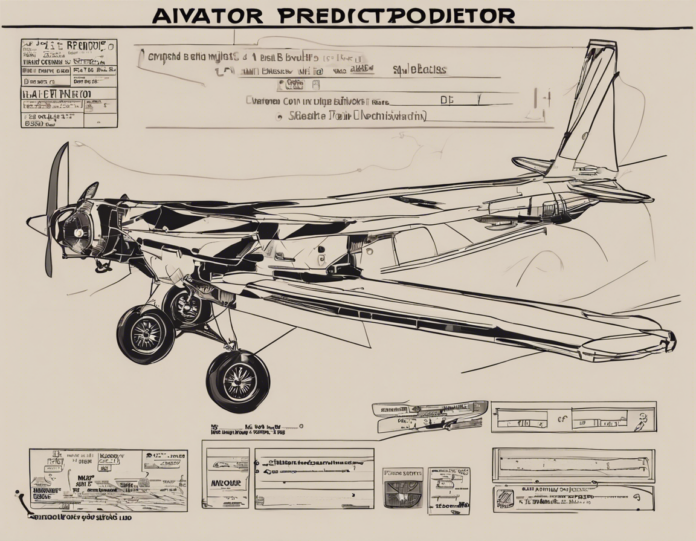Introduction
The field of aviation has come a long way since the Wright brothers made their historic first flight in 1903. From the development of commercial airlines to the advancements in supersonic travel, flight technology has continuously evolved. As we look towards the future, it is exciting to explore the predictions and possibilities that aviators have envisioned for the coming years.
The Rise of Electric Aircraft
One of the most significant trends in aviation today is the shift towards electric aircraft. With a growing focus on sustainability and reducing carbon emissions, many aviation experts predict that electric planes will play a key role in the future of flight. These aircraft are powered by electric motors and batteries, eliminating the need for traditional fossil fuels. Not only are electric planes more environmentally friendly, but they also have the potential to be quieter and more cost-effective to operate.
Autonomous Aviation
Another major development in the aviation industry is autonomous or unmanned aircraft. While pilotless planes may still seem like a concept from science fiction, the technology is rapidly advancing. AI and machine learning are making it possible for planes to navigate and make decisions without human intervention. Proponents of autonomous aviation argue that it could lead to increased safety, efficiency, and even lower ticket prices for passengers.
Supersonic and Hypersonic Travel
Advancements in supersonic and hypersonic travel have the potential to revolutionize the way we think about air travel. Supersonic aircraft fly faster than the speed of sound, while hypersonic aircraft travel at speeds five times faster than sound. Companies like Boom Supersonic and NASA are actively working on developing these next-generation aircraft, which could cut travel times in half and open up new possibilities for long-distance travel.
Sustainable Aviation Fuel
As concerns about climate change continue to grow, the aviation industry is under pressure to reduce its carbon footprint. One solution that has gained traction is sustainable aviation fuel (SAF). This fuel is made from renewable sources like biofuels and waste materials, offering a greener alternative to traditional jet fuel. Many experts believe that SAF will play a crucial role in the transition to more sustainable aviation practices in the future.
Urban Air Mobility
The concept of urban air mobility envisions a future where electric vertical takeoff and landing (eVTOL) aircraft shuttle passengers between urban centers. These vehicles, often referred to as flying taxis, could help alleviate traffic congestion in crowded cities and provide a faster alternative to ground transportation. Companies like Uber and Volocopter are at the forefront of this exciting new field, which could transform the way we think about urban transportation.
Space Tourism
While space tourism is still in its infancy, there is growing interest and investment in making space travel accessible to private citizens. Companies like SpaceX and Blue Origin are developing spacecraft capable of carrying tourists into suborbital and orbital flights. Though the cost of these experiences remains high, many believe that space tourism could become a reality for the general public in the not-too-distant future.
Challenges and Considerations
Despite the promising developments in aviation technology, there are still challenges and considerations that need to be addressed. Safety, regulatory hurdles, infrastructure requirements, and public acceptance are all factors that will influence the adoption and implementation of these futuristic concepts. Additionally, the economic viability and environmental impact of these advancements must be carefully evaluated to ensure a sustainable future for aviation.
Frequently Asked Questions (FAQs)
1. Will electric aircraft be able to fly long distances?
Yes, advancements in battery technology are enabling electric aircraft to fly longer distances. While range limitations still exist, ongoing research and development are focused on improving the capabilities of electric planes for commercial and private flights.
2. How safe are autonomous aircraft compared to traditional piloted planes?
Autonomous aircraft have the potential to be safer than traditional piloted planes in certain scenarios. AI and automation can help mitigate human error and improve decision-making processes, leading to enhanced safety measures in aviation.
3. What are the environmental benefits of sustainable aviation fuel?
Sustainable aviation fuel offers environmental benefits such as reduced carbon emissions, lower particulate matter, and decreased reliance on fossil fuels. By using renewable sources, SAF contributes to sustainability and climate conservation efforts in the aviation industry.
4. When can we expect to see flying taxis in operation in cities?
Flying taxis are still in the development and testing phase, but some companies aim to launch commercial operations in the next five to ten years. Regulatory approvals, infrastructure development, and public acceptance will play a crucial role in the timeline for deploying flying taxis.
5. What are the main challenges hindering the growth of space tourism?
The high cost of space tourism, safety concerns, and regulatory complexities are the main challenges hindering the growth of the industry. However, ongoing advancements in space technology and increased competition among aerospace companies could lead to more accessible and affordable space travel options in the future.
